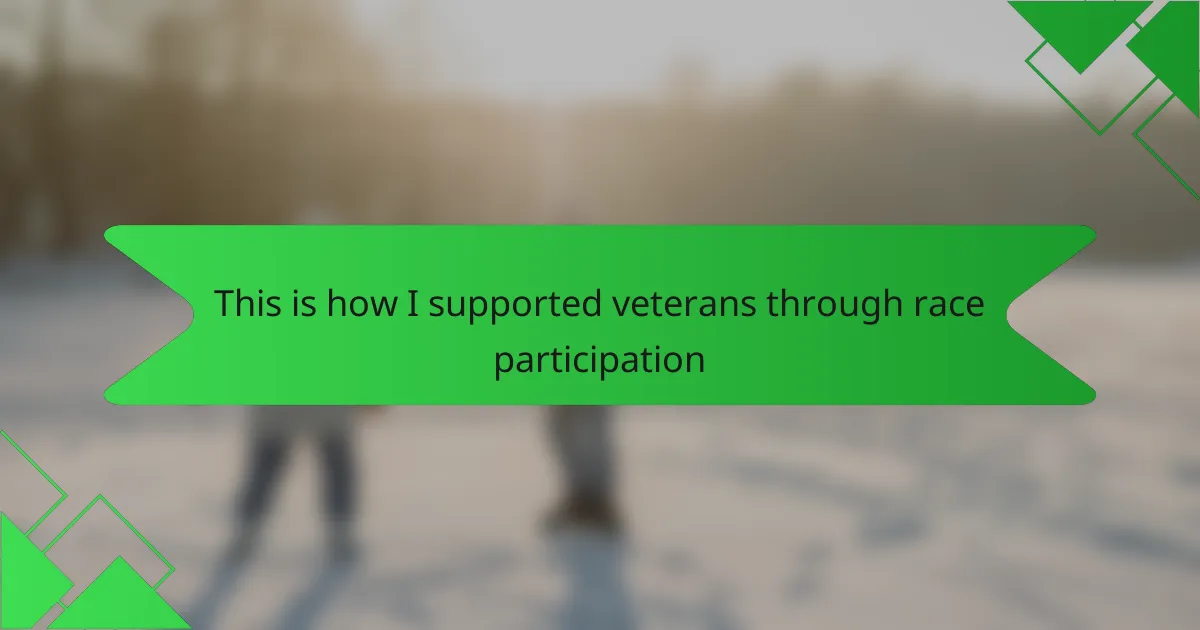Key takeaways
- Obstacle course racing (OCR) combines physical and mental challenges, fostering personal growth and resilience.
- Veterans benefit from OCR through rehabilitation, community support, and a sense of accomplishment, which aids their transition to civilian life.
- Effective race planning for veterans includes accommodating various needs, providing support systems, and creating a welcoming environment.
- Personal stories and encouragement play a crucial role in motivating veterans, highlighting the importance of connection during training and races.

Introduction to Obstacle Course Racing
Obstacle course racing, or OCR, is more than just a physical challenge—it’s a test of grit, strategy, and heart. From crawling through mud to climbing towering walls, each obstacle pushes you beyond what you thought was possible. Have you ever experienced that rush when you conquer something that once seemed impossible? I have, and it’s addictive.
What makes OCR unique is the blend of endurance and mental toughness it demands. Every race is different, and the terrain can be downright unpredictable. I remember my first race vividly—the mix of fear and excitement as I approached each obstacle taught me a lot about resilience.
But OCR isn’t just about finishing the course. It’s about the camaraderie among participants and the personal growth you discover along the way. For me, those muddy, challenging moments became powerful reminders of what we’re capable of when we push through adversity. Doesn’t that make you want to give it a try?
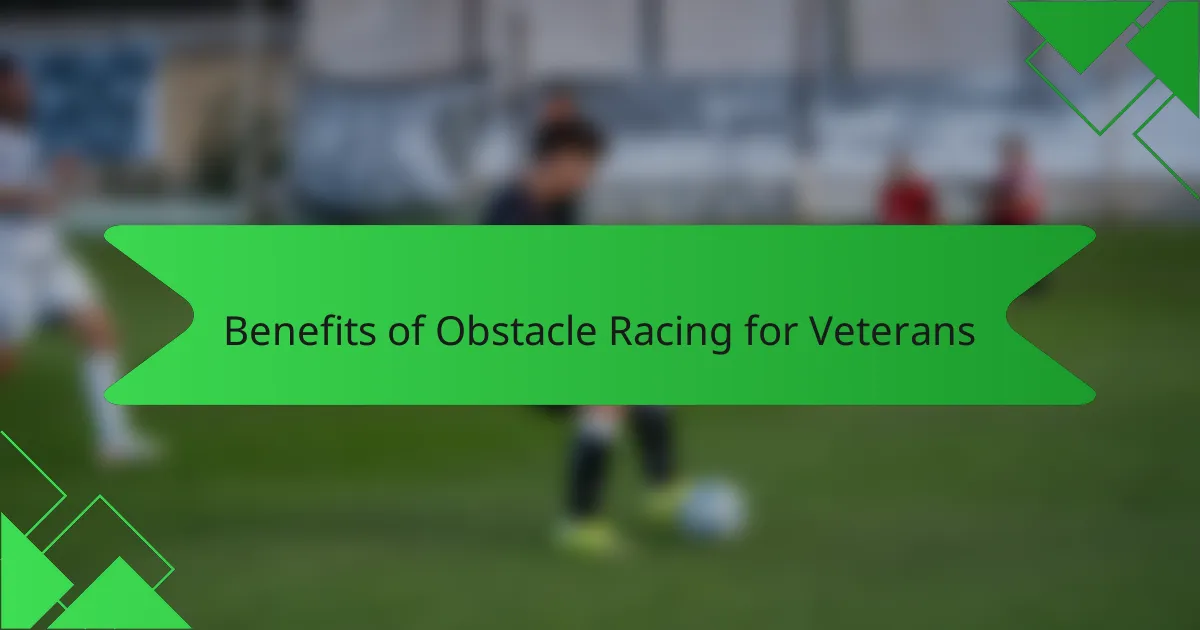
Benefits of Obstacle Racing for Veterans
Obstacle racing offers veterans physical rehabilitation in a way that feels less like therapy and more like a challenge to overcome. I’ve seen firsthand how pushing through a tough obstacle reignites a sense of strength and accomplishment that many veterans deeply appreciate. It’s not just about muscles repairing—the mental victory is often even more powerful.
Another benefit is the community that naturally forms around OCR events. Veterans, often used to a tight-knit support system, find new bonds in these races that echo that camaraderie. Have you noticed how shared hardship quickly turns strangers into teammates? That connection is vital for many veterans adjusting to civilian life.
Finally, obstacle racing serves as a metaphor for life’s hurdles, something many veterans can relate to intimately. Each climb, crawl, and sprint mirrors challenges faced off the battlefield. I believe this helps veterans regain confidence and reminds them that obstacles, no matter how daunting, are meant to be conquered.
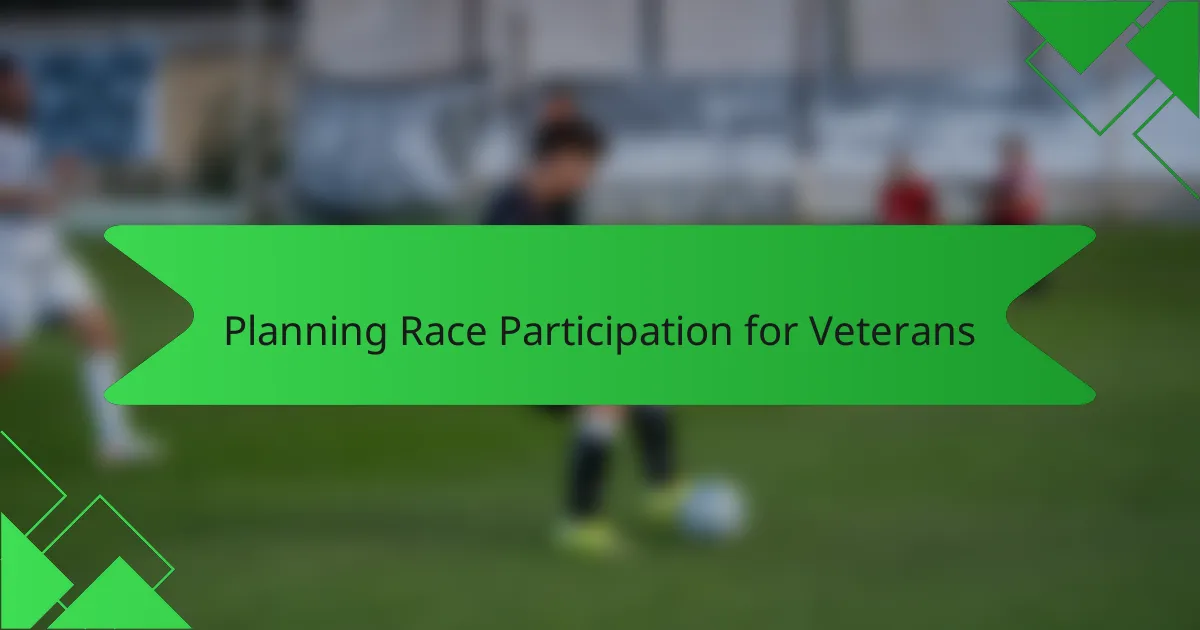
Planning Race Participation for Veterans
When planning race participation for veterans, I’ve found it’s crucial to consider their physical readiness and comfort levels. Some veterans may face unique challenges—from mobility issues to sensory sensitivities—so choosing courses that offer varying difficulty levels helps everyone feel included and capable. Have you ever felt that nervous excitement of preparing for a new challenge? Veterans often share that feeling, and setting realistic goals makes race day much more rewarding.
Another important step I take is coordinating support systems around the veteran participants. Whether it’s fellow racers, family, or veteran support groups, having people cheering them on creates a familiar sense of camaraderie that lifts their spirits during the race. I remember one veteran telling me how just seeing a friendly face near the toughest obstacle kept him pushing forward—it’s those moments that stick with me.
Lastly, I pay attention to the logistics, from transportation to post-race recovery spots. Veterans often appreciate when their specific needs—like accessibility or quiet areas to decompress—are thoughtfully addressed. It might sound simple, but these small details can make all the difference in making race participation a positive, empowering experience. Have you thought about how something as basic as a calm resting place might transform a tough day into a memorable victory?
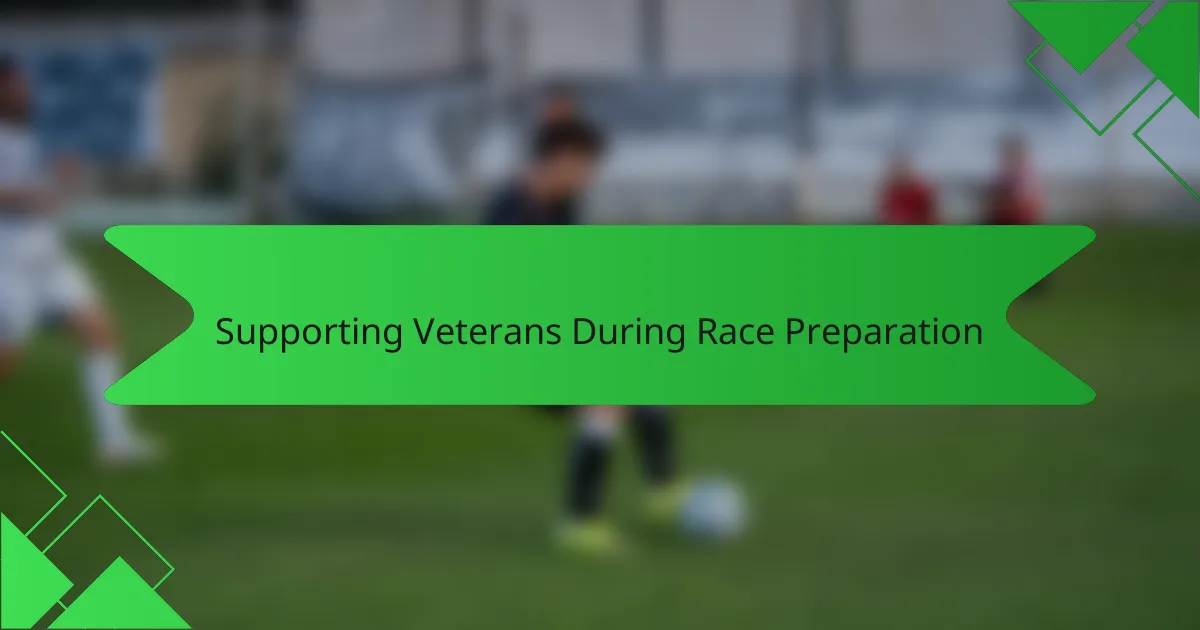
Supporting Veterans During Race Preparation
Supporting veterans during race preparation means more than just helping them train physically; it’s about understanding their unique journeys. I recall working with a veteran who struggled with trust and confidence, and by patiently walking through each training step, I saw his hesitation give way to determination. Have you ever noticed how encouragement at the right moment can completely change someone’s mindset?
I also focus on building a routine that respects each veteran’s pace and limits. One of them once shared how pacing himself during training helped him avoid burnout and actually enjoy the process. It’s a reminder that preparation isn’t just about pushing harder—it’s about knowing when to listen to your body and mind.
Finally, I find that creating a sense of purpose during training keeps motivation alive. When veterans understand that each session brings them closer to conquering the race—and what that symbolizes for their own resilience—they show up with renewed energy. Isn’t that feeling of progress the best fuel for any challenge?
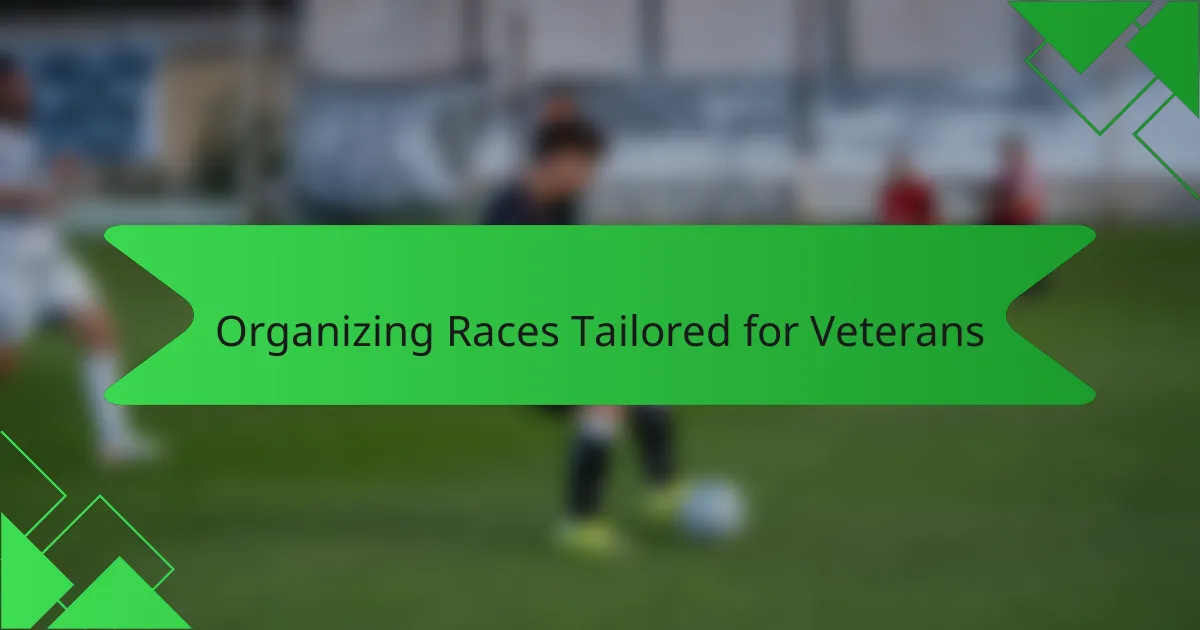
Organizing Races Tailored for Veterans
Designing races specifically for veterans means more than just setting up obstacles; it requires thoughtful consideration of their unique strengths and challenges. I remember organizing a race where we tailored obstacles to accommodate various mobility levels, and seeing veterans push through with pride was incredibly rewarding. Have you ever felt the power of creating a space where everyone, regardless of ability, can still compete and thrive?
One thing I learned quickly is the importance of integrating elements that resonate with veterans’ experiences—like teamwork challenges that mirror military camaraderie. During one event, watching participants encourage each other through tough obstacles reminded me how powerful shared struggle can be. Doesn’t that sense of unity make a race feel more like a mission than just a competition?
Attention to details like accessible course layouts and rest zones also makes a huge difference. I recall a veteran telling me how grateful he was for a dedicated quiet area after the race, where he could decompress without sensory overload. It’s fascinating how such small accommodations can transform a grueling day into a meaningful victory. What simple changes could we make to better honor those who’ve served?
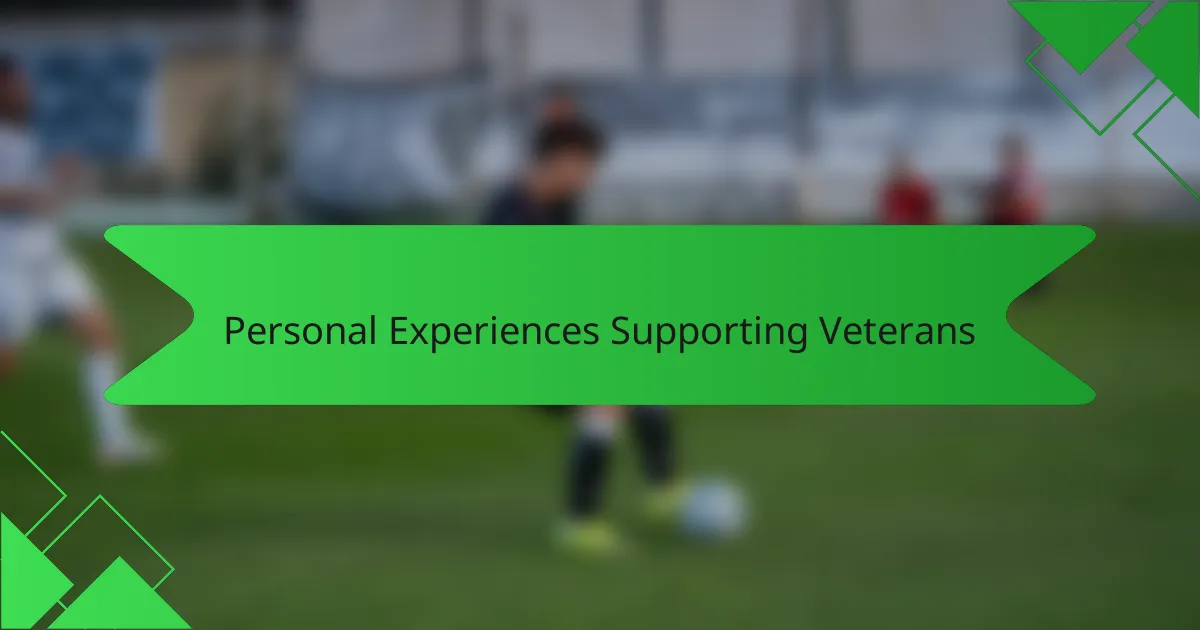
Personal Experiences Supporting Veterans
Supporting veterans through race participation has been one of the most rewarding experiences in my obstacle racing journey. I remember one veteran who was hesitant to join at first, fearing he wouldn’t keep up. Watching him cross the finish line later, beaming with accomplishment, reminded me how meaningful these moments can be beyond just the physical feat.
Sometimes, it’s the smallest gestures that make the biggest difference. I’ve found that simply being there to cheer, share a water bottle, or encourage a veteran before a tough obstacle can spark a powerful boost of confidence. Have you ever noticed how genuine support can turn uncertainty into determination?
Each veteran’s story is unique, and supporting them means listening closely. I recall conversations where veterans shared how the race gave them renewed purpose and connection—something that often goes beyond words. These personal insights fuel my commitment to keep creating inclusive, empowering race experiences.
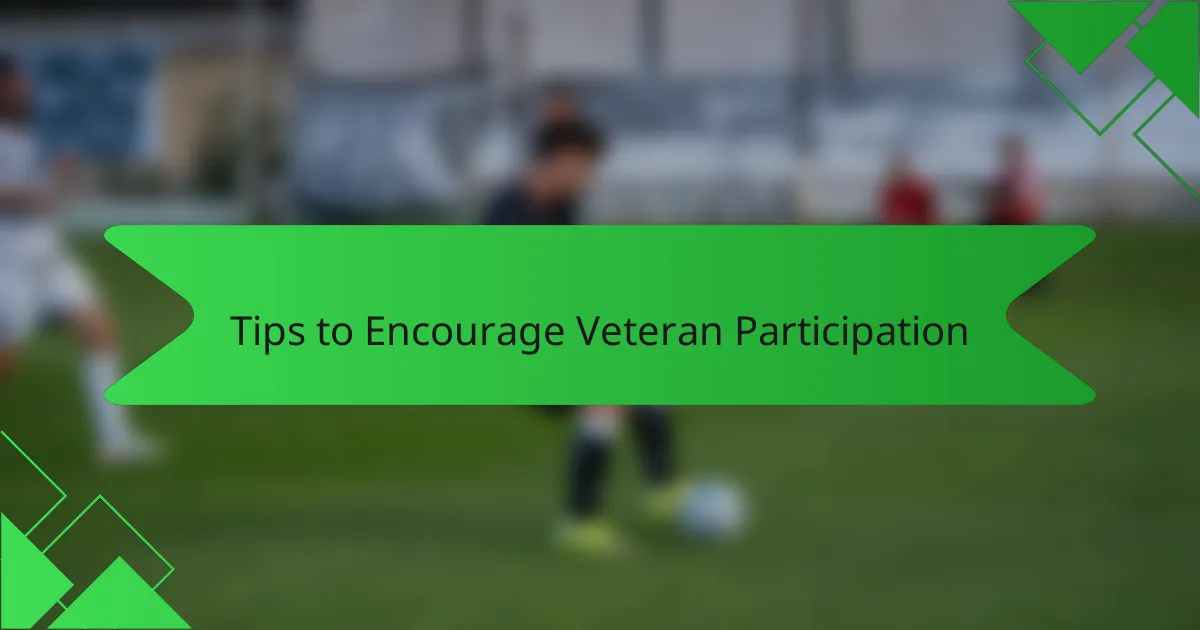
Tips to Encourage Veteran Participation
Encouraging veterans to participate often starts with understanding their needs and motivations. I’ve found that reaching out personally and sharing stories of other veterans who’ve found strength and community through obstacle racing can spark that initial interest. Have you ever noticed how hearing someone else’s journey can make a daunting goal suddenly feel achievable?
Another tip I’ve learned is to create a welcoming environment that honors veterans’ backgrounds. Simple gestures—like acknowledging military service during pre-race talks or offering team spots specifically for vets—can make them feel seen and valued. When trust is built from the start, participation grows naturally.
Lastly, flexibility is key. Offering options for different fitness levels and pacing allows veterans to set their own challenges without pressure. I remember one veteran telling me how this freedom relieved his anxiety and helped him focus on personal victories rather than competition. Doesn’t that sound like the kind of encouragement we all need when facing something new?
